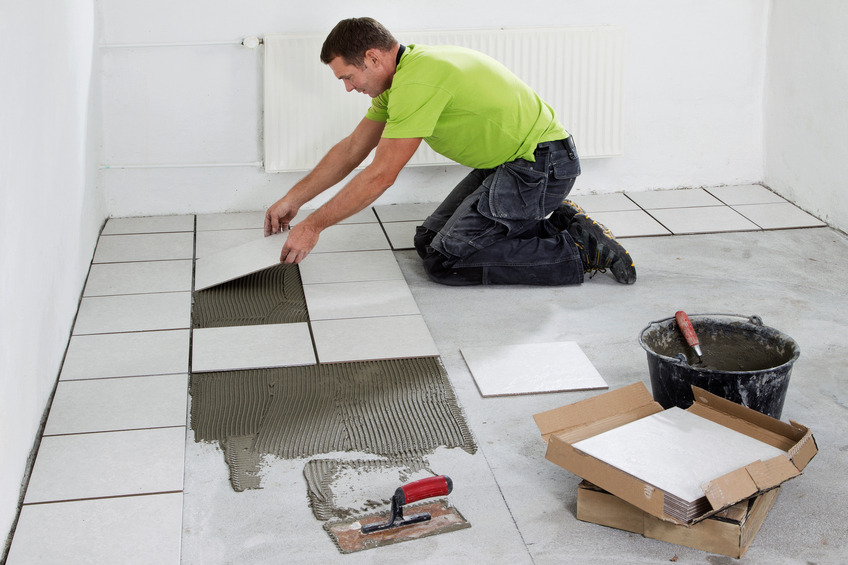Premium Tile Installation Austin Solutions for Your House
Premium Tile Installation Austin Solutions for Your House
Blog Article
Discover the Keys to Perfect Ceramic Tile Setup Every Single Time
Achieving flawless floor tile installation might feel like an overwhelming job, typically resulting in frustration and blemishes that interfere with the overall aesthetic. Mastering the art of floor tile installment entails a series of exact actions and methods that, when performed correctly, can result in a refined and seamless finish. From surface prep work to cement application, each stage plays an essential duty in the final end result of your job. By recognizing the secrets behind each action, you can make sure that your tile installation not just satisfies but surpasses your expectations.
Correct Surface Prep Work
Effective floor tile installation pivots dramatically on thorough surface area prep work to make certain a flawless outcome. The surface area must be clean, dry, and structurally appear to stop future problems such as loose floor tiles or broken grout.
To ensure correct bond, it is recommended to rough up smooth surface areas via sanding or scarifying. Furthermore, applying a guide can boost bonding between the tile and the substrate adhesive. Unequal surface areas should be leveled utilizing a self-leveling compound to stop lippage and guarantee a smooth finish.
Furthermore, checking for potential sources of moisture is critical, as excess moisture can bring about mold and mildew development and damages the floor tiles gradually. Making use of a wetness barrier or waterproofing membrane in damp locations like kitchen areas or shower rooms is necessary to protect the ceramic tiles from water damages. By diligently preparing the surface prior to ceramic tile installation, one can develop a aesthetically appealing and durable tiled location that will stand the examination of time.

Selecting the Right Adhesive
Selecting the proper adhesive is a vital action in ensuring the successful installation of ceramic tiles. The kind of glue you pick will certainly rely on numerous factors such as the sort of ceramic tile, the substrate material, and the location of the installation. There are different kinds of adhesives readily available in the market, consisting of thin-set mortar, mastic, and epoxy.

Epoxy adhesives are water-resistant and incredibly durable, making them optimal for locations vulnerable to moisture such as restrooms or kitchens. They are likewise suitable for setting up glass or steel ceramic tiles. When picking an adhesive, see to it to comply with the manufacturer's suggestions and take into consideration the certain requirements of your ceramic tile installment job.
Precision Cutting Strategies
One of the most usual tools made use of for precision cutting in floor tile setup is the tile cutter. Ceramic tile cutters come in numerous kinds, including hands-on ceramic tile cutters, electrical damp saws, and handheld tile cutters. see this Hand-operated tile cutters are ideal for straight cuts on ceramic and porcelain ceramic tiles, providing clean and accurate sides.
In addition, using tools like floor tile scribes or glass cutters can assist in scoring and breaking ceramic tiles with precision. By mastering these accuracy cutting techniques, tile installers can make sure an expert coating and an aesthetically appealing result in their floor tile tasks.

Cement Application Tips
When transitioning from precision cutting techniques to grout application in floor tile installation, interest to detail and strategy is vital for attaining a perfect coating. Cement offers not only as a useful aspect that fills the spaces between floor tiles however likewise plays a significant role in the total visual of the setup.
As soon as the cement is applied, utilize a wet sponge to clean the ceramic tiles, making sure not to get rid of grout from the joints. Adhering to these grout application ideas will result in a skillfully mounted tile surface area that enhances the elegance of any type of area.
Ending Up Touches and Upkeep
To complete the tile setup job properly, focus to information throughout the finishing touches and routine maintenance is critical. After the cement has dried and the floor tiles are safely in position, the last steps entail making certain that all sides are properly sealed. Using a high-quality sealant around the boundary of the tiled area helps prevent water visit here damages and extends the life of the installation. Furthermore, looking for any kind of loosened ceramic tiles or grout and resolving them without delay can stop a lot more substantial issues down the line.
Regular maintenance is vital to protecting the elegance and performance of your tiled surface areas. A basic regimen of sweeping or vacuuming complied with by mopping with a gentle cleaner can help keep your tiles looking excellent (tile installation austin). For locations that are frequently revealed to dampness, such as kitchens or shower rooms, regular resealing of cement lines is recommended to stop mold and mold growth
Conclusion
Finally, accomplishing perfect tile setup every single time needs focus to information and proper methods. By concentrating on surface prep work, selecting the right adhesive, using accuracy cutting approaches, applying grout very carefully, and do with attention to detail, you can ensure a professional-looking outcome. Keep in mind to comply with these actions and preserve your tiles frequently to extend their lifespan and keep them looking their ideal.
One of the most usual devices made use of for accuracy cutting in floor tile installation is the tile cutter. Tile cutters come in various types, including manual tile cutters, electrical damp saws, and handheld tile cutters. Manual floor tile cutters are suitable for straight cuts on ceramic and porcelain floor tiles, giving clean and precise edges. In addition, making use of devices like tile scribes or glass cutters useful link can help in scoring and snapping ceramic tiles with precision. By mastering these accuracy reducing strategies, floor tile installers can ensure a professional coating and an aesthetically appealing result in their floor tile jobs.
Report this page